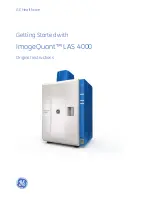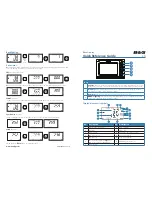
Operator's Manual
WP700Zi-OM-E-RevA
488
6.25E-8 5
26.97
dB
7.50E-8 6
26.78
dB
8.75E-8 7
26.57
dB
1.000E-7 8
26.47
dB
1.125E-7 9
26.41
dB
1.250E-7 10
26.30
dB
Correlation ACSN
.9995 33.0
dB
.9990 30.0
dB
.9985 28.2
dB
.9980 27.0
dB
.9975 26.0
dB
.9970 25.2
dB
nlts Non-Linear
Transition Shift
Definition
Provides a measurement of the nonlinear transition shift for a disk drive signal.
Description
Using the DDAs correlation function,
nlts
measures the nonlinear transition (adjacent location)
shift. At least two full cycles of the test sequence are required for the auto-correlation. In
addition, the period of the waveform must be specified.
The parameter then verifies, and may adjust, the pattern length based on the value provided.
This is crucial, because variations in disk rotation speed make the exact pattern length for a disk
waveform difficult to determine.
Using the pattern length as a starting point, the DDA looks for an auto-correlation peak at the
length. At the top of the peak, the pattern repeats. The DDA locates the top, and notes the
corresponding time so as to determine the exact pattern length. Then it recalculates the auto-
correlation, using this length. If the value of the auto-correlation peak at the pattern length is
less than 0.9, the NLTS is not calculated. This is because the pattern-length sections will be too
uncorrelated to provide a meaningful result. Otherwise, the pattern length value is used to
calculate nlts. Using the pattern delay value, the DDA measures the auto-correlation coefficient
for the first pattern-length chunk of the input waveform with a second pattern-length chunk,
starting from the beginning of the input waveform at the delay value.
In order to correctly calculate
nlts
, the disk drive waveform must be a pseudorandom sequence
that will create an echo in an auto-correlation calculation, corresponding to the non-linear
transition shift. Typically, this waveform is a 127-bit pattern based on an x
7
+ x
3
+ 1 polynomial;
and the NLTS echo appears at a pattern delay of 20.06% of the input pattern length. Ideally, the
value of NLTS is:
NLTS(%) = 200* Correlation Coefficient (at delay).
However, because noise in the input waveform can affect the correlation coefficients value, the
DDA averages several NLTS measurements to reduce the effect of noise. An NLTS
measurement is performed for each pattern, and the results averaged. All the individual NLTS
measurements can be observed by histogramming the
nlts
parameter.
The greater the number of pseudorandom pattern periods in the input waveform, the greater the
reduction in the effect of noise on the
nlts
result. In order to further reduce the impact of noise,
Содержание DDA 7 Zi series
Страница 1: ...Operator s Manual WavePro SDA and DDA 7 Zi Series Oscilloscopes ...
Страница 2: ... L R R H HUD RU D D ...
Страница 41: ...Operator s Manual WP700Zi OM E RevA 40 The detachable WavePro Zi front panel ...
Страница 376: ...WavePro 7Zi 375 WP700Zi OM E RevA Absolute Offset Relative ...
Страница 439: ...Operator s Manual WP700Zi OM E RevA 438 ...
Страница 440: ...WavePro 7Zi 439 WP700Zi OM E RevA ...
Страница 544: ...Thank you for purchasing a WavePro SDA or DDA 7 Zi Oscilloscope ...
















































